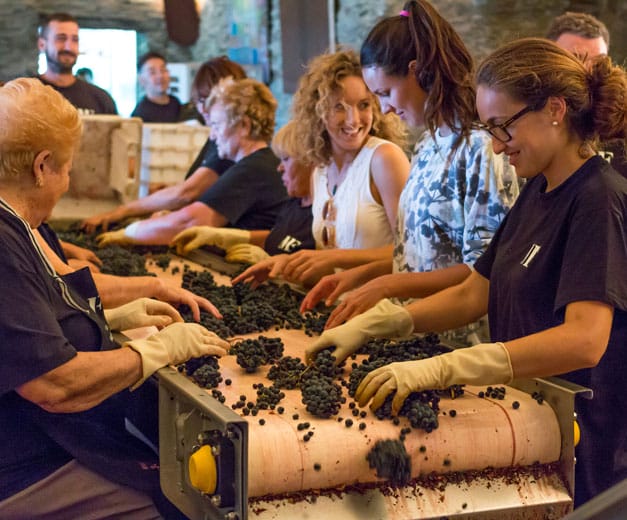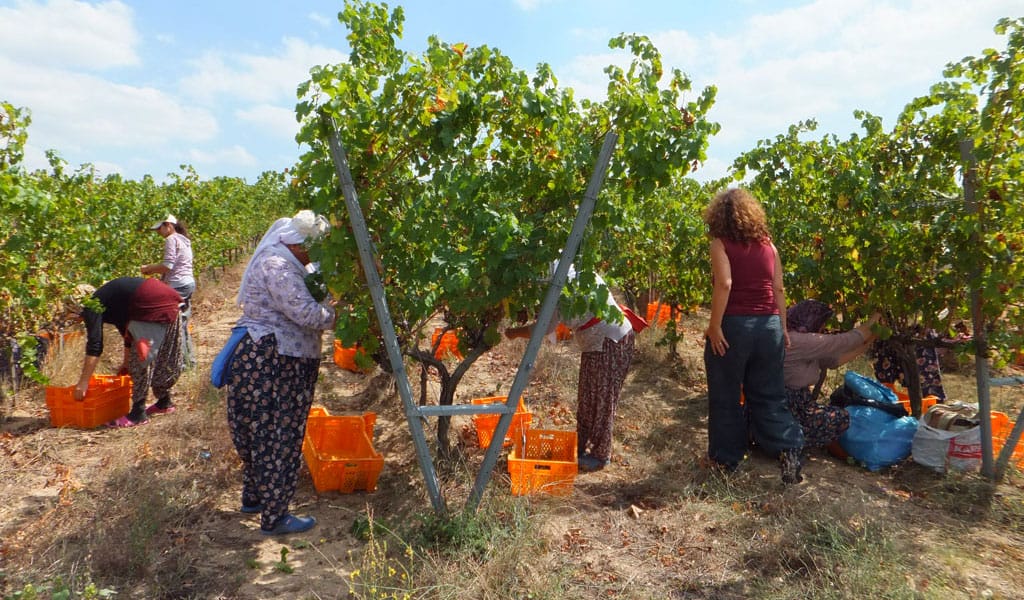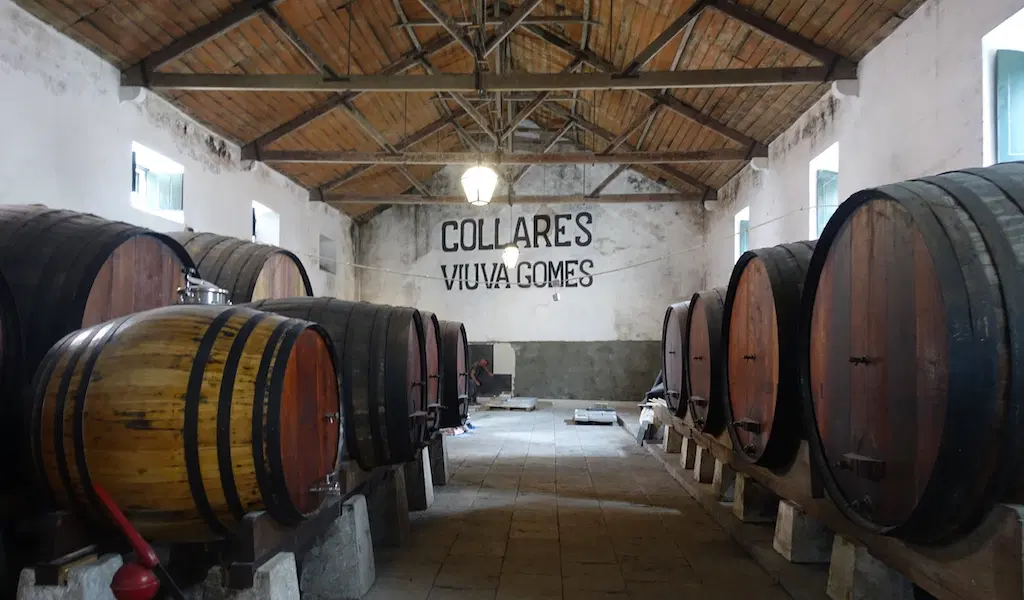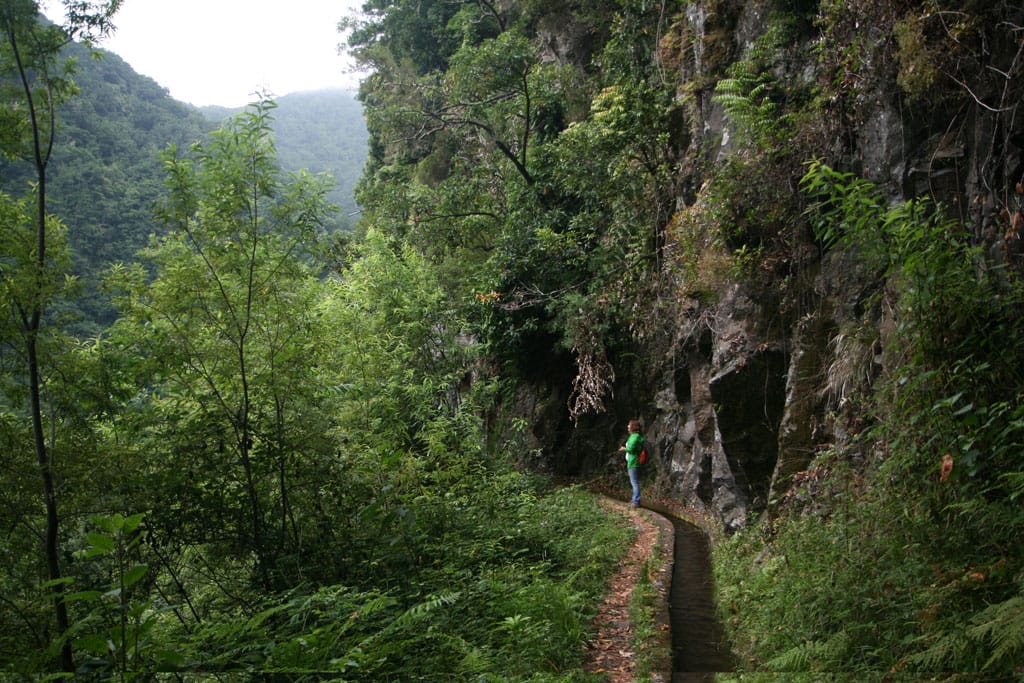“In Cadaqués, we cure anchovies differently than anywhere else,” Rafel Martín Faixó told us. We were sitting at long wooden tables outside of his family’s winery, on a sunbaked hilltop in Cadaqués, two and a half hours north of Barcelona. Rafel is the son of Carmen Faixó and Rafa Martín Mota, and together with his sisters Ester and Georgina, the five of them comprise the Martín Faixó (MF family) brand, featuring three restaurants in Cadaqués and the Celler Martín Faixó winery, with a rural tourism guesthouse on-site.
“My father’s family has been in Cadaqués for a few generations,” Rafel said, “but my mother’s family, the Faixó family, has been here forever. Our anchovy recipe comes from my mother’s family, and it’s at least 300 years old.” Unlike almost everywhere else along the Mediterranean, in Cadaqués, cracked black pepper is used in addition to the salt when curing anchovies. The pepper not only adds a new dimension of flavor to the tenderized flesh, it also speeds up the curing process. Regardless, the anchovies made by the MF family take about one year to go from the sea to your plate.
Cadaqués is a charming fishing town, with steep and treacherous slate-cobbled streets and pristine white walls. It has managed to remain insulated from the rest of the ever-developing Costa Brava for centuries. The long and winding mountain road that all visitors must traverse before arriving at this deep natural harbor, just 30 kilometers from the southern French border, has thwarted large-scale building projects like those in other coastal towns.
The town is located on the Cap de Creus peninsula – the most eastern point in Spain and the spot where the mighty Pyrenees finally end, tumbling in a jagged heap into the Mediterranean. Just 10 minutes up the mountain from Cadaqués, right at the peak in the road where you either veer right and head north toward France or down into the town of Roses and the flat, expansive plain that lies at the southern feet of the Pyrenees, you find Sa Perafita, a Catalan masia (farmhouse) from the year 1300.
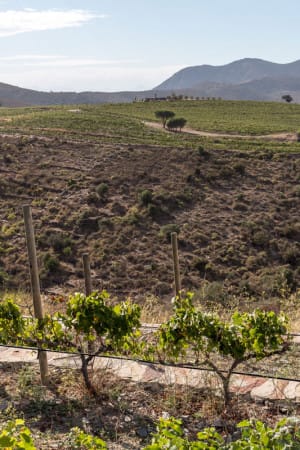 After falling into serious disrepair and living a short life as a seedy nightclub in the 1980s, Sa Perafita was purchased by the MF family, who transformed it into a winery and seven-room boutique “rural hotel.” As we strolled the beautiful property, with its views of impressive mountain peaks in the distance and the family’s own lush vineyards below, Ester Martín Faixó shared the genesis of their winemaking enterprise. The family purchased land that had belonged to a Belgian housing community in 2000, with the idea of opening a winery. The vineyards were planted that year, and the big stone and timber farmhouse began to be restored. The first harvest from these new vines was in 2004, and the first wine bottled under the Celler Martín Faixó label was in 2007.
After falling into serious disrepair and living a short life as a seedy nightclub in the 1980s, Sa Perafita was purchased by the MF family, who transformed it into a winery and seven-room boutique “rural hotel.” As we strolled the beautiful property, with its views of impressive mountain peaks in the distance and the family’s own lush vineyards below, Ester Martín Faixó shared the genesis of their winemaking enterprise. The family purchased land that had belonged to a Belgian housing community in 2000, with the idea of opening a winery. The vineyards were planted that year, and the big stone and timber farmhouse began to be restored. The first harvest from these new vines was in 2004, and the first wine bottled under the Celler Martín Faixó label was in 2007.
We had the pleasure of being invited to the family and friends’ “End of Harvest” lunch at Celler Martín Faixó in mid-September and witnessed firsthand the passion that goes into making this family’s prized wines. Everyone – from the current generation to the grandparents – pitches in during the harvest, though this work is done more out of pleasure than necessity. Apart from the core family members and other MF employees, outside help is hired during the harvest to perform the bulk of this often intense work, as all 14 hectares of grapes of Celler Martín Faixó are harvested by hand – that’s 60,000 kg of grapes annually, yielding around 50,000 bottles of wine.
We arrived to find the winery a hive of activity, as the final harvest had been collected that morning, and they were busy sorting ripe garnatxa grapes by hand on a long conveyer belt that led to the crusher. The red grapes are gently pressed to release their juices and then allowed to ferment with the skins in huge stainless steel tanks in a back room of the ancient farmhouse building. Family and friends laughed and joked as they quickly removed any rocks, leaves or insects from the grape bunches rolling down the belt. After the final bin of grapes was sorted, Carmen sounded the call for lunch, and everyone headed out happily to the lawn, ready to partake in a feast.
Endless bottles of the family’s white (100 percent picapoll), rosé (garnatxa and merlot) and red (garnatxa) wines accompanied platters of their cured anchovies, massive loaves of crusty peasant bread and a ripe tomato salad with house-cured olives, sweet onions and a reduction of the MF vermouth (made from an atypical base of oak-aged cabernet sauvignon). Up next were heaps of steamed clams and mussels, followed by an aromatic fideuà (noodle) casserole with sausage and pork ribs. Rich chocolate cake and many boxes of taps de Cadaqués, a local type of sponge cake in the shape of a cava cork, rounded off this massive midday meal.
Though the history of the MF wine business itself is relatively young, the Martín and Faixó families have been carving out a name for themselves in the Cadaqués food scene for more than 50 years, starting with the founding of the famous Casa Anita restaurant by Rafa’s mother in 1960. Casa Anita now lays claim to the title of “oldest restaurant in town” and is still going strong. On the other side of the family, Meliton Faixó founded the Cadaqués stalwart Bar Meliton around the same time. Both Casa Anita and Bar Meliton were favorite haunts of iconic town figures such as Marcel Duchamp and Salvador Dalí, and the walls are still adorned with relics and reminders of this era. Rafa and Carmen were married in 1982, the same year that they opened their own restaurant, dubbed Can Rafa, right on the main passeig of the Cadaqués waterfront.
Over the last 33 years, Can Rafa has risen to the top of the local dining list, specializing in local seafood and rice dishes (the arrós negre, or “black rice” with cuttlefish and squid ink was our favorite). Now, the torch has been passed to the new generation, as all three of the Martín Faixó children (now in their 20s and 30s) are deeply involved in running the family businesses, with Georgina helping out at Can Rafa, Ester taking the reins of the Verástil Crepery just two doors down, and Rafel running Enoteca MF around the corner, a wine and tapas bar/specialty shop that is the family’s most recent endeavor.
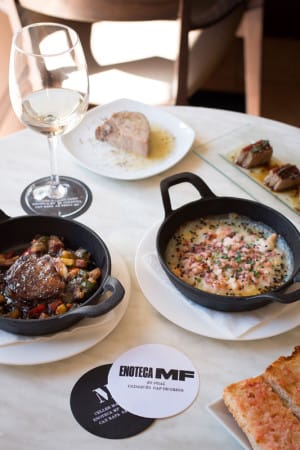 At first, the business plan was to open only a wine bar that featured the Celler Martín Faixó line and served a few snacks to go with the libations as well as a shop that acted as an outlet to sell their house-cured olives and anchovies, olive oil, confited tuna loin and homemade, unfiltered, pale ale-style wheat beer. However, within the first week of opening, customers clamored for more substantial food offerings, and the Enoteca quickly became a full-blown tapas bar with a menu that reflects the seasons. Rafel is the head of the kitchen and cooks many of the dishes with the support of former Michelin-starred chef Joan Borràs, who is in charge of the central kitchen facility at Sa Perafita (where most of the Enoteca prep work is done).
At first, the business plan was to open only a wine bar that featured the Celler Martín Faixó line and served a few snacks to go with the libations as well as a shop that acted as an outlet to sell their house-cured olives and anchovies, olive oil, confited tuna loin and homemade, unfiltered, pale ale-style wheat beer. However, within the first week of opening, customers clamored for more substantial food offerings, and the Enoteca quickly became a full-blown tapas bar with a menu that reflects the seasons. Rafel is the head of the kitchen and cooks many of the dishes with the support of former Michelin-starred chef Joan Borràs, who is in charge of the central kitchen facility at Sa Perafita (where most of the Enoteca prep work is done).
With intriguing dishes like seared pig foot roulade with pistou, bluefin tuna tataki with wild sea fennel, and cuttlefish canelons with a squid ink sauce, Enoteca’s is no typical tapas menu. When we asked about the sea fennel, Rafel led us to the water just 10 meters from where we were sitting and showed us what looked like a weed with small yellow flowers growing out of a stone wall along the beach. The sea fennel, whether it is fresh, pickled or infused into olive oil, has a spicy, lemony flavor that is a perfect complement to rich fish species like tuna or salmon.
Locals concur that the best months to visit Cadaqués are June and September; the weather is beautiful and the tourists are few. By all accounts, August is absolutely unbearable because of the crowds. All year round, except for some weeks in November and another few around Christmas, the MF family’s businesses are running at full tilt. All year round the winery offers tours, tastings, group meals and guest rooms.
It’s nearly impossible to go anywhere in town without seeing a bit of the MF family, be it the members themselves out for a morning coffee, or their wines and olive oil in restaurants and markets all across Cadaqués. Above all, as hosts, they have been among the most welcoming we have been lucky enough to meet, and no trip to Cadaqués would be complete without sampling at least one of this foodie family’s gastronomic labors of love.
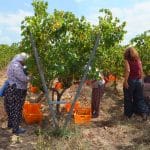 October 5, 2019 Wine Harvest Week
October 5, 2019 Wine Harvest Week
Zeynep Arca Şallıel had a successful career in advertising in Istanbul, but in 1995 she […] Posted in Istanbul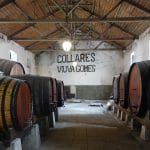 September 14, 2018 CB on the Road
September 14, 2018 CB on the Road
They withstood the phylloxera and the strong Atlantic winds, and are slowly fighting […] Posted in Lisbon February 22, 2017 CB on the Road
February 22, 2017 CB on the Road
Located in the Atlantic at the same latitude as Casablanca, Madeira may be a small […] Posted in Lisbon
Published on October 19, 2015
Related stories
October 5, 2019
IstanbulZeynep Arca Şallıel had a successful career in advertising in Istanbul, but in 1995 she decided to take on a daunting new challenge: taking part in the revival of small-scale viniculture in the ancient winemaking region of Thrace.“I wanted to do something with soil, something that mattered a little bit more,” she says. Her father…
September 14, 2018
LisbonThey withstood the phylloxera and the strong Atlantic winds, and are slowly fighting back against urban expansion, so it’s no surprise that a glass of wine made from grapes grown in Colares tastes like no other. The smallest wine region in Portugal, Colares is also probably one of its most distinct. Located on the coastline…
February 22, 2017
LisbonLocated in the Atlantic at the same latitude as Casablanca, Madeira may be a small island, but there’s so much to see that it takes three to five days to get a real sense of it. An hour and a half by plane from Lisbon, the capital and largest city is Funchal, a historic town…







































